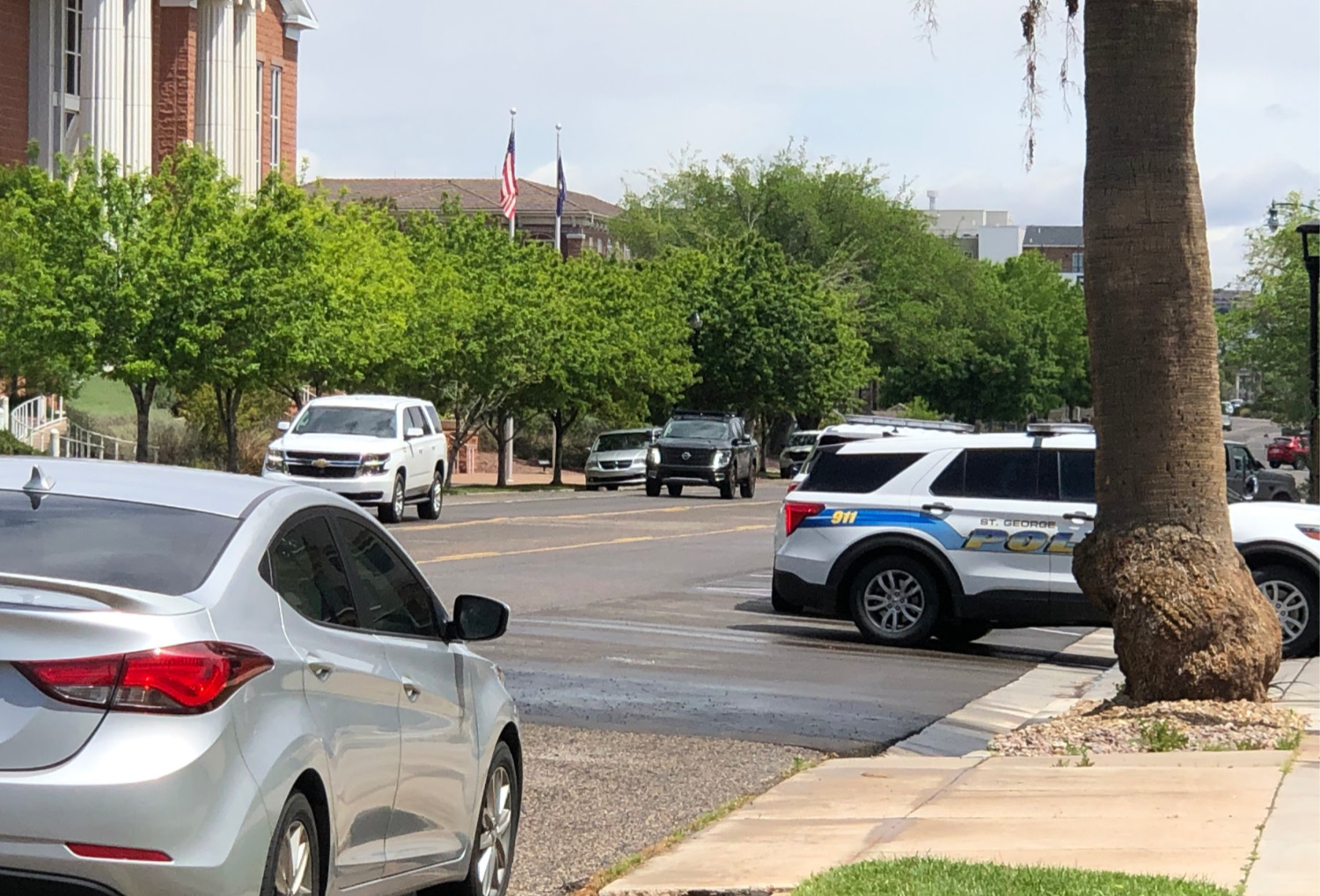ST. GEORGE — Suspicious luggage at an apartment complex on Tabernacle Street triggered evacuations and a response from the Washington County Bomb Squad Tuesday as officers cordoned off an area across the street from the 5th District Courthouse.

At 1:30 p.m., officers were dispatched to a report of suspicious bags that were left unattended near the corner of one of the apartment complexes at the Joule Plaza on Tabernacle Street, St. George Police Officer Tiffany Atkin said.
The bomb squad was also called in while officers were dispatched to cordon off Tabernacle Street between 200 West and 300 West to secure the scene before the bomb squad’s arrival.
Meanwhile, three apartments closest to the corner where the bags were discovered were evacuated as a safety precaution, Atkin said.
Members of the bomb squad arrived to investigate donning explosive ordinance disposal suits, or blast suits. The luggage was scanned using an x-ray, which revealed the bags contained men’s clothing and personal items.

“Because the owner of the luggage was unknown,” Atkin said, the bags were taken to the police department where they will be kept in the long-term storage until the owner of the luggage makes contact.
The bomb technician that scanned the bags, Kohl Furley, also serves as the Hurricane Valley Fire District Battalion Chief and is one of the squad members that covers the Washington County area. He joined the squad after attending explosives training in Alabama, he said.
Explosive ordnance disposal suit
Bomb suits are made of Kevlar, which has an outstanding strength-to-weight ratio that makes it an ideal fabric for bulletproof and blast-resistant clothing, according to HowStuffWorks.
Additional foam or other padding is also incorporated throughout the bomb suit, offering protection from not only flying debris but also from the force of impact that can occur if the technician is thrown to the ground.

Moreover, when a bomb strikes a blast-resistant suit, the force is diminished by the suit’s tightly woven fibers that spread the blast’s force throughout the suit, while ballistic plates help deflect force and repel any flying shrapnel or fragments. The flame-resistant quality of the suit neutralizes heat and flames emitted by the explosive.
The ballistic plates are made of either steel, aramid or coated ceramic and are inserted into internal pockets made of webbing with Velcro closures.
Additionally, the high collar of the suit protects the neck and extends up to the helmet, and overshoes are typically sewn onto the bomb suit and fit over the technician’s footwear. Blast-resistant clothing typically includes quick-release straps or breakaway zippers on the suit’s legs, which permit rapid access to an injury or to free an injured technician from the material for easier transport or medical aid.
With the heat inside of a bomb-resistant suit that can become unbearable, some incorporate internal cooling devices that circulate water collected from a melting ice pack throughout the network of tubes sewn into the suite or a vest worn under the suit.
Copyright St. George News, SaintGeorgeUtah.com LLC, 2020, all rights reserved.